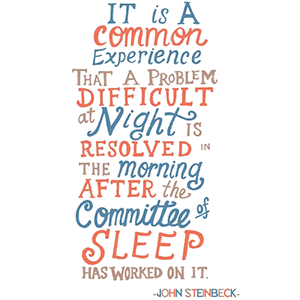A false awakening is a vivid dream about awakening from sleep. After a false awakening, subjects often dream they are performing daily morning rituals such as cooking, cleaning and eating. The experience is sometimes called a double dream, or a dream within a dream. A false awakening may occur following an ordinary dream or following a lucid dream (one in which the dreamer has been aware of dreaming). Particularly if the false awakening follows a lucid dream, the false awakening may turn into a ‘pre-lucid dream,’ that is, one in which the dreamer may start to wonder if they are really awake and may or may not come to the correct conclusion.
In a study by Harvard psychologist Deirdre Barrett, 2,000 dreams from 200 subjects were examined and it was found that false awakenings and lucidity were significantly more likely to occur within the same dream or within different dreams of the same night. False awakenings often preceded lucidity as a cue, but they could also follow the realization of lucidity, often losing it in the process.
read more »
False Awakening
Dream Incubation
Dream incubation is a practiced technique of learning to ‘plant a seed’ in the mind, in order for a specific dream topic to occur, either for recreation or to attempt to solve a problem. For example, a person might go to bed repeating to themselves that they will dream about a presentation they have coming up, or a vacation they recently took, or a person they are interested in. While somewhat similar to lucid dreaming, dream incubation is simply focusing attention on a specific issue when going to sleep. Several studies have shown this method to be successful over a period of time.
For example, in a study at Harvard Medical School, Dr. Deirdre Barrett had her students focus on a problem, such as an unsolved homework assignment or other objective problem, before going to sleep each night for a week. She found that it was possible to develop novel solutions in dreams that were both satisfactory to the dreamer and rated as objectively solving the problem by an outside observer. In her study, two-thirds of participants had dreams that addressed their chosen problem, and one-third reached some form of solution within their dreams.
read more »



